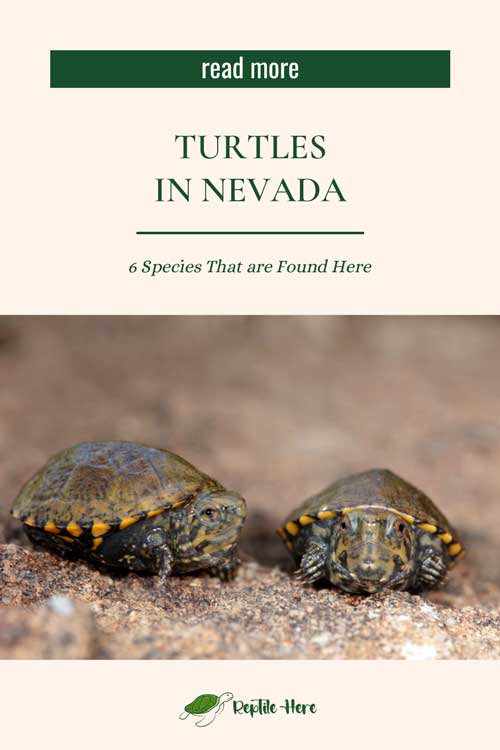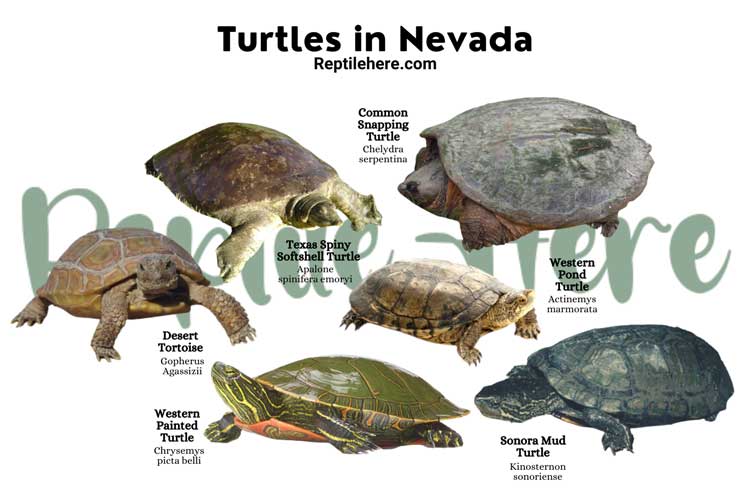Turtles in Nevada – 6 Species That are Found Here
Nevada is home to 6 turtle species. ONLY two of them are native to the state and include the desert tortoise (the official Nevada state reptile) and the western pond turtle.
The other turtles—including the Texas spiny softshell, common snapping turtle, western painted turtle, and Sonora mud turtle—are intruder species.
They have most likely found themselves in Nevada as a result of pet releases into the wild by turtle owners or as part of conservation efforts by relevant authorities.
Below, we’ll take a closer look at these 6 Nevada turtle species and the key facts that you need to know about each of them.
For each of these species, we’ll discuss its physical appearance, habitat, diet, average adult size, lifespan, and conservation status.
6 Types Of Turtles in Nevada
Contents
1. Common Snapping Turtle
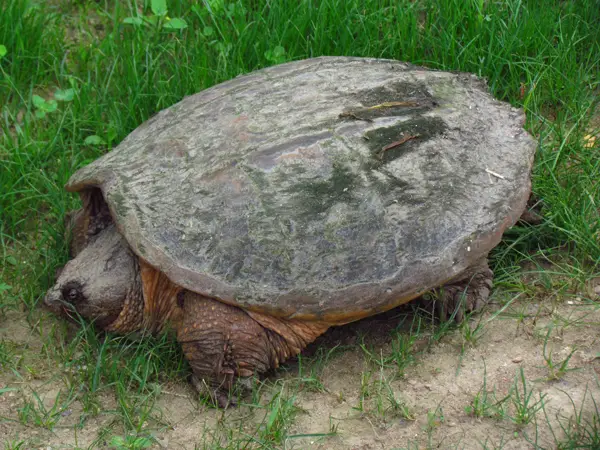
- Scientific name: Chelydra serpentina
- Common name: Snapping Turtle
- Family: Chelydridae
- Size: 8 to 18 1/2 inches
- Lifespan: 30 to 50 years or more
- Conservation status: Least Concern
Common snapping turtles are also found in Nevada. An average adult is pretty large and has a shell length of 18½ inches long.
This species has a chunky head, a long tail, and large webbed feet. The shell color is black or olive and has no distinct pattern.
These Nevada snapping turtles are known for their powerful jaws—they’re so strong that these turtles eat other turtles!
You’ll find them in waterbodies with muddy bottoms. Examples include marshes, ponds, lakes, rivers, and even shallow streams.
They generally prefer waters with aquatic vegetation in plenty and foods such as fish, frogs, birds, etc.
These Nevada turtles generally show docile behavior but can get quite aggressive if taken out of water. The best way to calm it is to take it back to the waters, where it feels safe.
2. Texas Spiny Softshell Turtle
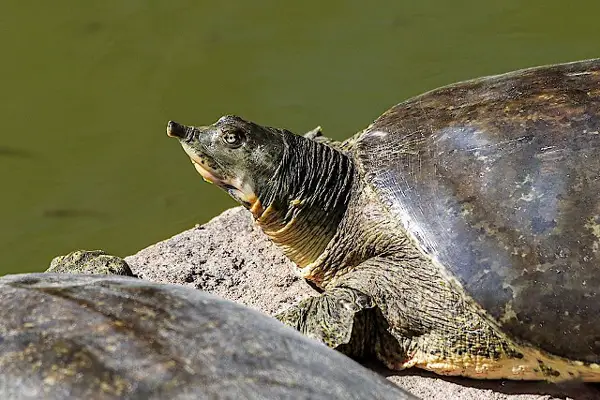
- Scientific name: Apalone spinifera emoryi
- Common name: Spiny Softshell Turtle
- Family: Trionychidae
- Size: 5 to 9 inches (males), 12 to 20 inches (females)
- Lifespan: 30 to 70 years
- Conservation status: Least Concern
The Texas Spiny softshell turtle is a medium-to-large freshwater species that live in Nevada’s lakes, streams, and rivers with muddy or sandy bottoms and little or no vegetation.
Female spiny softshell turtles are usually larger than males. And unlike other turtles, this species has a flexible, leather-like carapace that’s extremely rounded and flattened.
The shell color can be olive grey or yellow-brown. Just like other softshell turtles, this species also has a snorkel-like snout.
The young ones feature well-defined round spots that are easily visible on the shell (though these spots become invisible as they transition to adulthood).
Spiny softshell turtles in Nevada tend to eat anything they find in the waters including crayfish, insects, small fish, and so on. They hunt by burying themselves in the mud or sand while keeping their head uncovered to grab food as it swims by.
These turtles are also able to breathe underwater by taking in oxygen through their throat skin. This is a useful adaptation given that they don’t spend a lot of time out of water.
Other adaptations of these Nevada turtles include webbed feed, long claws, and extremely flat shells that enable them to quickly swim away from predators and burry in the muddy bottom of the waters they reside in.
3. Western Pond Turtle
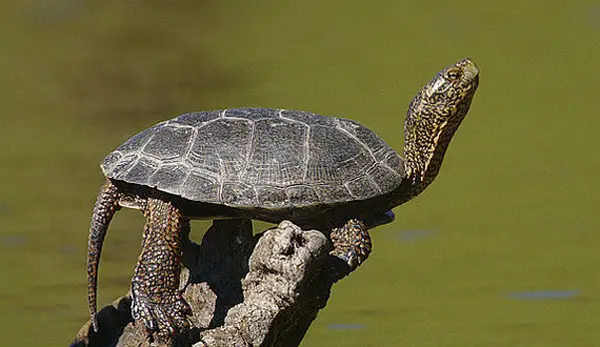
- Scientific name: Actinemys marmorata
- Common name: Western Pond Turtle, Pacific Pond Turtle
- Family: Emydidae
- Size: 6 to 8 inches
- Lifespan: 50 years
- Conservation status: Vulnerable
The Western Pond Turtle is a small-to-medium-sized turtle native to Northern Baja Nevada.
Mind you, it is the only freshwater turtle species native to Nevada. It can be found in the State’s creeks, ponds, lakes, and other suitable water bodies.
Carapace coloring for this turtle can be black, brown, or dark green, with some yellowish spots. Patterns of lines or dots also usually radiate from the center of each shell plate of this tortoise.
Also, the limbs of a western pond turtle found in Nevada feature prominent scales while its head is webbed or spotted with black.
Western pond turtle species is omnivorous and its diet includes insects, tadpoles, frogs, and even carrion. For this reason, it prefers living in waterbodies with plenty of aquatic vegetation such as cattails, water lilies, watercress, etc.
The Nevada western pond turtle has suffered habitat loss due to development, low reproduction, predators, and invasive aggressive non-native pet turtles being released into their environment.
All these factors make the species population in Nevada state greatly endangered.
Also read: Turtles in Florida
4. Western Painted Turtle
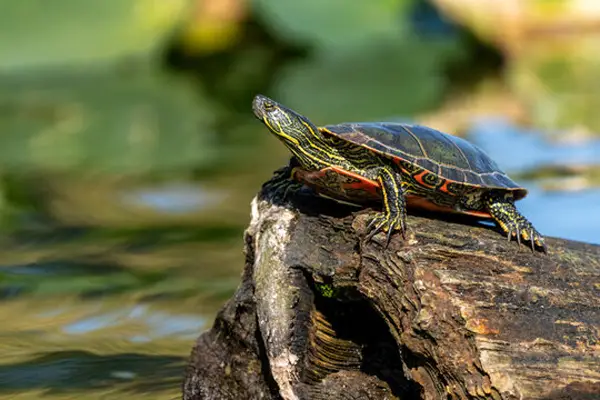
- Scientific name: Chrysemys picta belli
- Common name: Westland Painted Turtle
- Family: Emydidae
- Size: 4 to 10 inches
- Lifespan: 30 to 40 years
- Conservation status: Least Concern
The Western painted turtle is a subspecies of painted turtle and is also found in Nevada waterbodies.
This turtle is identified by an oval-shaped carapace that lacks a ridge in the middle. The carapace is usually dark olive or black in color.
The lower side of the shell is usually red, with multiple dark markings in the center. And the skin itself is covered with yellow stripes.
Westland painted turtles of Nevada are aquatic and their webbed feet help propel them in the waters.
The most common habitats for this turtle in Nevada include slow-moving rivers, shallow streams, and lakes. They choose these areas because they can easily find food.
Given that they’re omnivorous, they feed on aquatic vegetation as well as meat from insects, snails, shrimps, tadpoles, and earthworms.
Their hatchlings are more carnivorous to help take in more proteins for building muscle.
5. Sonora Mud Turtle
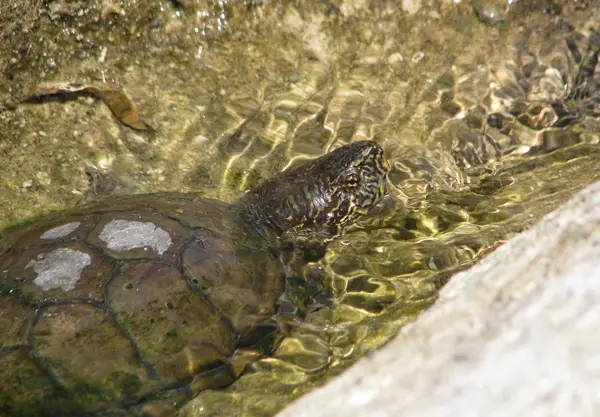
- Scientific name: Kinosternon sonoriense
- Common name: Sonora Mud Turtle, Mud Turtle
- Family: Kinosternidae
- Size: 5 to 7 inches
- Lifespan: 30 to 50 years
- Conservation status: Near threatened
This turtle likes spending most of its time in water and is fond of creeks, streams, and even stock ponds in Nevada.
It is a pretty isolated species and won’t be found in many areas apart from Nevada, Mexico, and New Mexico.
A Sonora mud turtle is identified by its brown skin with yellow lines. The upper shell is olive-brown in color and has keels on it.
Similar to most other mud turtles, these turtles are omnivorous and like feeding on small insects and animals as well as vegetation.
Although this turtle species was once widespread, its range and population have been on the decline owing to habitat loss due to human intervention.
For this reason, the Sonora mud turtle in Nevada has been labeled a “Near Threatened” species and is under special protection.
Thus, spotting one in the wild in Nevada will mean you’re quite lucky. And we caution you to be extra careful in your observations!
6. Desert Tortoise
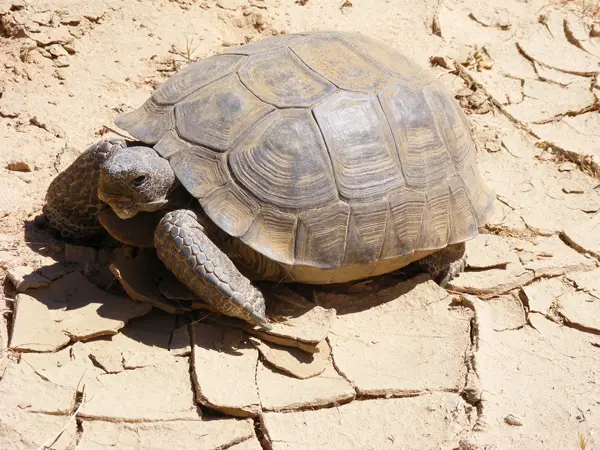
- Scientific name: Gopherus Agassizii
- Common name: Mojave Desert tortoise
- Family: Testudinidae
- Size: 10 to 15 inches
- Lifespan: 60 to 80 years
- Conservation status: Threatened
The Desert tortoise is one of the native species of Nevada. It prefers living in the semi-arid climates in the Southern parts of Nevada and is capable of withstanding intense heat and little rain.
The tortoise also prefers living in dry grassland areas.
A desert tortoise is defined by a large domed shell ranging from brown to green, while its scutes have light patches. It stays relatively inactive for the most part of a year, during which it digs caves and burrows
Unfortunately, this keystone species is threatened, mostly due to habitat loss, and is under protection by Nevada authorities.
The desert tortoise in Nevada is herbivorous and feeds on wildflowers and grass. During the summer months, it has been observed feeding on cacti and other succulents.
It’s also worth noting that the desert species of California is labeled as an “indicator species.” This means it is used to show the health of the ecosystem by observing its population health.
Unfortunately, the Desert tortoise population is on a downward trend throughout its habitat. This has been attributed to issues like mining, expansion, natural predation, and destruction of their burrows by off-road vehicles.
Related: Turtles in Maryland
Conclusion
Now you know the 6 turtles found in Nevada and the key traits and features defining each of them. The state is home to only two native species, namely the desert tortoise and the western pond turtle.
Other, non-native species of turtles are Texas spiny softshell, common snapping turtle, western painted turtle, and Sonora mud turtle.
Keep in mind that these invasive species are non-native and most likely found there as a result of pet releases into the wild or as part of conservation efforts for the species.
